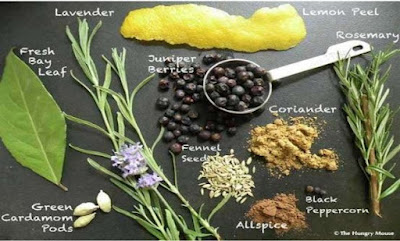I'm preparing to board a flight from Nice to London and I'm contemplating my first gin and tonic. Not only is it one of my favorite summer drinks, but four of my closest friends are waiting for me at Heathrow and I know they all love it as well. I am already envisioning our nightly aperitif on the riverside terrace of the historic Cotswolds home that I've rented for the week.
Our Cotswold home was once an old mill...note the gin & tonic chairs
Gin's history goes back to the Middle Ages. While many associate gin with Great Britain, this spirit has roots in the Netherlands where the mixture supposedly originated. Once sold in pharmacies for the treatment of kidney, gout or stomach ailments. the elixir was also used by Dutch soldiers prior to battle to help decrease anxiety.
Gin became very popular in England in the 16th century. During this period a heavy tax was levied on all foreign liquor by the British government. Locally-made gin, however, was not taxed. Overnight, gin became the alcohol of choice, especially among the poor since English gin was dirt cheap. However, too much of a good thing became a huge social issue. To reduce over-consumption, legislation was finally passed to tax British gin. There were riots in the streets.
Ingredients of gin are closely guarded trade secrets among the distilleries. While the main ingredient, juniper berries, is always present, each company offers their own spin with a melange of other botanicals. Gin can have floral nuances. It can have a citrus profile. Or, it can tend toward herbal notes.
These botanicals are a sampling of what are used in gin
Today, gin has come full circle in a kind of Cinderella story. Once a drink of the impoverished, it is now sold in fancy packaging and a an impressive selection appears in swanky bars. It's moved well beyond the local pub-gin-and-tonic, to a high end alcohol that can be served solo at the most exclusive of restaurants. For example, the most expensive gin, Watenshi, sells for the equivalent of $3,000 a bottle in London. In a smaller package than the standard wine bottle, Watenshi is one that should definitely be sipped at the end of the meal like a fine Cognac.
I will be conducting a blind gin tasting with my four friends. Watenshi won't be on the list, but here are the contenders:
~ Martin Miller (made in England using water from Iceland)
~ Oliver Cromwell (supposedly a great bang for the sterling)
~ Hendrick's (made in Scotland)
~ William Chase (made in western England near the Wales border)



No comments:
Post a Comment